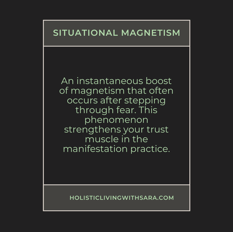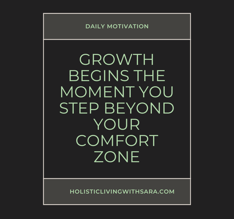Unlocking Growth by Doing the Opposite
Sara Klysing
4/5/20255 min read


A New Perspective on Change, Neuroplasticity and Spiritual Magnetism
In a world that thrives on routines and comfort zones, we often fall into patterns of behaviour and thought that limit our personal growth. While these habits may offer safety and predictability, they can also lead to stagnation and missed opportunities. What if the key to transformation lies not in doing more of the same, but in doing the exact opposite? This concept of "doing the opposite" isn't just a thought experiment; it's a powerful psychological and spiritual tool that can radically shift our lives.
The Power of Opposite Action
Opposite action is a concept that originates from Dialectical Behaviour Therapy (DBT), developed by psychologist Marsha Linehan. It involves deliberately acting against your emotional impulses when those emotions do not fit the facts or are unhelpful in a given context (Lacheim.org, 2023). For example:
If you are feeling socially anxious and want to withdraw, you challenge yourself to initiate a conversation.
If you are angry and feel like yelling, you choose to speak calmly or take a moment to walk away.
If you are inclined to say yes to please others, you practise saying no to protect your boundaries.
This practice helps rewire emotional responses, replacing avoidance or impulsiveness with intentional, values-based action.
When to Use Opposite Action
It’s essential to note that opposite action should be used when your emotions or behaviours do not align with the actual facts or your long-term goals. It's not about suppressing valid feelings but about challenging reactions that may be rooted in past trauma, fear, or limiting beliefs.
If you're not sure whether doing the opposite of what you feel is the right move, try asking yourself:
Does this emotion match the actual situation?
Will acting on this help or harm me in the long run?
Which choice reflects the kind of person I want to be?
These simple questions can help you pause, gain some perspective, and choose a response that feels more aligned with your values.
Neuroplasticity: Changing the Brain Through Action
The human brain is remarkably adaptable thanks to neuroplasticity—its ability to change and reorganise neural pathways based on experience. According to a 2023 review by Burtea et al., repeated behaviours and thoughts form neural circuits that become stronger over time. By intentionally performing opposite actions, we stimulate new neural patterns that challenge and replace unhelpful ones (Burtea et al., 2023).
For instance, if someone consistently avoids conflict and instead begins practising assertive communication, their brain will slowly become more comfortable with assertiveness, reducing the fear associated with it. In this way, opposite action serves as a vehicle for cognitive and emotional flexibility, fostering personal resilience and adaptability.
Spiritual Magnetism and Energy Shifts
Beyond the psychological, doing the opposite taps into deeper energetic and spiritual principles. Spiritual magnetism refers to the ability to attract people, opportunities, or circumstances based on one's energetic frequency or alignment with their higher self. Yogananda (2023) emphasised that magnetism is cultivated through inner strength, courage, and the willingness to align one's actions with soul-level truth.
When you take actions that feel uncomfortable but are aligned with your growth—such as speaking up, setting boundaries, or stepping into visibility—you shift your energetic field. This shift, in turn, alters what you attract. It acts as a spiritual signal to the universe that you are ready to receive new experiences.
Doing the Opposite to Rewire Thought Patterns
Let’s take the example of self-doubt. If your internal dialogue regularly sounds like "I'm not good enough," opposite action could be expressing confidence or listing your recent achievements aloud. This isn't about toxic positivity, but rather about expanding your identity beyond the narrow confines of fear-based thinking.
A 2025 study published in the International Journal of Social Health found that practising positive self-affirmation can enhance psychological wellbeing, support emotional regulation, and promote personal development (Zuraidy, 2025). Choosing to think or act differently changes our internal narrative—and our narrative shapes the way we experience reality.
The Importance of Discomfort
Opposite action isn't easy, and it isn't supposed to be. Growth lies in discomfort. Just like strengthening a muscle requires resistance, strengthening new behaviours requires us to face the awkwardness, fear, or guilt that comes from breaking old habits.
Discomfort is not an enemy; it is a sign that we are moving beyond our current identity into something greater. As existential psychotherapist Irvin Yalom noted, "The only way to make sense out of change is to plunge into it, move with it, and join the dance."
Practical Examples of Doing the Opposite
To integrate this concept into daily life, start small. Here are some everyday examples:
The People Pleaser: If your default is to say yes to avoid conflict, practise saying no. Try it in low-risk scenarios, like declining an invitation or asking for what you need.
The Over-Talker: If you usually dominate conversations, practise listening more. Reflect before responding.
The Perfectionist: If you obsess over every detail, allow yourself to submit something that's 80% done and observe the outcome.
The Avoider: If you tend to procrastinate or run from responsibilities, break tasks into small steps and start with one action.
The Quiet Observer: If you always stay in the background, challenge yourself to speak up in a meeting or post something meaningful online.
Each time you do the opposite, you create new opportunities, insights, and ways of being.
Combining Opposite Action with Mindfulness
Mindfulness enhances the effectiveness of opposite action. By observing our thoughts and feelings without judgement, we create the space to choose a different response. Mindfulness helps us catch ourselves in the moment before defaulting to an automatic behaviour. It’s in that moment of pause where transformation begins.
Apps like Headspace and Calm, and mindfulness-based therapies, support this process by cultivating awareness and presence.
How Opposite Action Creates Situational Magnetism
Situational magnetism refers to the dynamic, energetic pull that emerges when someone acts in alignment with their truth, especially when it goes against the grain of who they were before. It's the magnetism that makes others take notice, the shift in energy that opens doors, attracts support, or invites serendipitous opportunities.
People who have transformed their lives often describe a period where everything changed once they began doing what felt right but uncomfortable. This is no coincidence. When you break free from autopilot and step into conscious choice, you signal to the world (and yourself) that you're ready for a different reality.
What it comes down to
Doing the opposite is more than a behavioural experiment—it's a gateway to growth, healing, and transformation. It rewires your brain, aligns your energy with what you truly desire, and expands your sense of self. It can be the difference between repeating the past and rewriting your future.
So next time you find yourself stuck, ask:
What would doing the opposite look like?
Then try it.
You might be surprised by what’s waiting on the other side.
References
Burtea, A., Ghita, M., Buda, C., & Anghel, L. (2023). Neuroplasticity and its Role in the Psychotherapeutic Process. Procedia - Social and Behavioral Sciences, 245, 1149-1154. https://doi.org/10.1016/j.sbspro.2023.04.013
Lacheim.org (2023). DBT Skill: Opposite Action. [online] Available at: https://www.lacheim.org/wp-content/uploads/2023/12/DBT-Opposite-Action.pdf
Zuraidy, N.A., 2025. Positive affirmation self-talk, impacts on well-being, when and how to start doing it. International Journal of Social Health, 4(1). Available at: https://ijsh.ph.asianpublisher.org/index.php/rp/article/view/279 [Accessed 13 Apr. 2025].
Yogananda, P. (2023). Yogananda on Magnetism: How to Attract What You Need in Life. Ananda.org. [online] Available at: https://www.ananda.org/blog/yogananda-magnetism-god/
Headspace. (2024). Meditation and Mindfulness. [App] Available at: https://www.headspace.com/
Calm. (2024). Calm App for Mindfulness. [App] Available at: https://www.calm.com/




